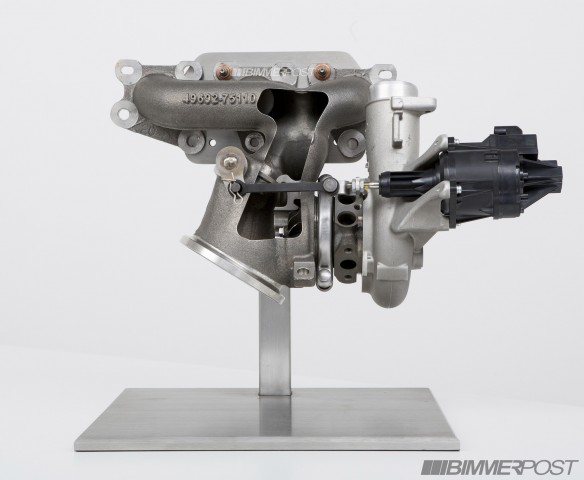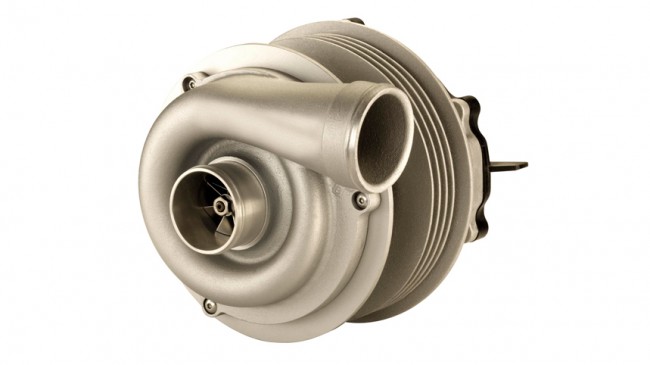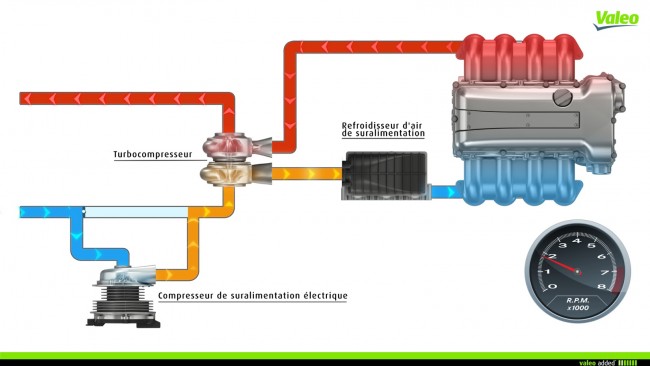OK, for many of you this article might not make a lot of sense. But for the very vocal few who have been taking to the online performance forums or contacting us directly about the potential of OE manufacturers applying the use of electric turbochargers to production watercraft, we felt it was necessary to discuss the pros and cons, and what it would take to even bring us to this level:
On paper, electric turbochargers sound like a great idea. They provide all of the power of a conventional turbocharger without the lag of pressurized exhaust gases, location-sensitive positioning, or the intrusive plumbing concerns. Automotive manufacturers have been working feverishly to apply the technology to withstand the rigors of daily driven/occasionally raced vehicles. While turbocharger manufacturers – Valeo, Honeywell and Continental – are closing in on having their electric turbos in production vehicles as soon as 2016, the technology is unlikely to see powersports applications for years to come.
Why? Because nearly all applications, be them automobiles, commercial vehicles, motorcycles or personal watercraft, run on a 12-volt (12v) electrical system. Of course, many production automobiles and motorcycles prior to the early 1950s ran on only 6-volts of electricity, when most all features were primarily mechanical (manual window regulators, dash gauges, etc.), thus only requiring a little bit of juice to operate. Also, the added voltage was needed to crank over (electric start) larger and more powerful engines. And in order to power the electric turbos these manufacturers are creating requires a staggering 48-volts of electricity, or four-times the current amount.
Even today’s electric and hybrid cars employ 12v systems. Today’s most advanced automobiles employ inverters to power high discharge headlamps and secondary electrical components like electric-assist steering systems, water pumps and electric air conditioning compressors – thus saving the engine from efficiency-robbing parasitic loss. Now, 48v does come in “just below” the 50-volt threshold of potential bodily harm. Of course, getting zapped with 48v won’t tickle, but you’ll still walk away on your own two feet. Nevertheless, as the move is being rallied by automakers, the powersports industry simply doesn’t require nearly as much juice.
The most-equipped touring bikes don’t need 48v to operate, and even today’s Can-Am Spyders and Polaris’ Slingshots with advanced steering and secondary systems don’t require such voltage either; so converting a PWC to 48v is simply a massive undertaking that is wholly unnecessary. Sea-Doo’s iControl-equipped PWC (with GPS controlled speedometers, and full instrumentation) hardly draw enough current to require more than 12v. With even with Valeo’s promise of a potential 10-to-15 percent increase in MPG, the electricity to power their turbo to operate at its 10,000rpm idle (with a maximum of 70,000rpm) is far too much for current PWC.
Now, on the bright side, the conversion of 12-to-48 volts is achievable, but requires doubling the current electric system; specifically, a 12v battery and 12v generator that feeds a DC/DC converter that then feeds a 48v storage unit, which powers the 48v turbo. Thankfully, technology for 48v storage banks (ie. lithium ion batteries) are quickly advancing (and shrinking in size), so such a system is possible although not exactly practical…yet. But, the physical weight of such a system today would already outweigh the efficiency gained by moving to an electric turbo, even if it was solely applied to supplementing the current supercharger.
Normally, it’s wise to always watch the OE’s moves within their snowmobile and in some part, their motorcycle and side-by-side divisions. (example: Both Sea-Doo’s 900 ACE motor and Yamaha’s TR-1 are directly linked to their snowmobile lines.) Right now, mechanically-driven superchargers will remain en vogue until further notice, and that’s just fine. Why so many anticipate manufacturers opting to replace superchargers with turbochargers is still baffling to us, but such is mob mentality. Until then, keep a close eye on manufacturers’ other hand to keep from being distracted.
https://youtu.be/wF39HNJS3AY?t=10m32s










